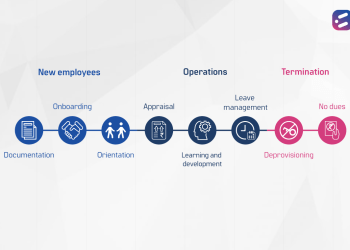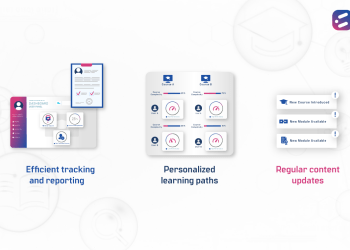COVID-19 has changed every aspect of our lives, and transformed the way we do business. In addition to creating the new remote/hybrid workforce, it has disrupted supply chains, caused shipping delays, port congestion, and panic buying. Businesses of every kind, everywhere, ran out of stock of finished goods and raw materials. The pandemic was just the most recent blow to supply chain management. Thanks to globalization, businesses have also had to contend with cyberattacks, political or economic instability, or natural catastrophes, the world over.
Which is why businesses need to be prepared, ‘just in case’.
Just In Case (JIC) Supply Chain Management
Just In Case (JIC) is in fact a management strategy that enterprises around the world deploy. JIC is basically an inventory strategy where companies keep large inventories on hand to minimize the probability of a product going out of stock. Here, businesses plan for all eventualities from natural disasters to supply chain delays, etc. This is critical in some industries (like healthcare and defense) where you cannot risk running out of supplies, or some geographies where there is a high risk of delay due to transportation/logistics issues. The downside is that JIC involves a large investment in stock, hence could have a lower return on investment.
JIC, despite the costs involved, is a strategy followed by several enterprises as it counteracts other risks such as permanent loss of major customers, loss of suppliers, supply-chain collapse, and so on.
Just In Time (JIT) Supply Chain Management
While some enterprises opt for JIC, others prefer to go the Just in Time (JIT) way. This is a management strategy that prioritizes disruption-free logistics strategies and involves calculating how long a potential disruption could last. Such businesses have just enough on-hand to keep going until the disruption is sorted out. In other words, you receive new supplies “just in time”. The advantage here is that there is less capital sunk in stock and therefore ROI is likely to be higher under normal circumstances.
So, what’s better: JIC or JIT?
It depends on the kind of business you are in. If it’s healthcare, for instance, JIC would make more business sense. By and large, most other sectors these days prefer JIT planning since there are fewer overheads. But one must understand that JIT only works in a well-oiled supply chain. If supply is slow, unreliable or fails to keep production flowing, or there is poor transportation infrastructure (as is common in less industrialized countries), additional costs may be incurred and ROI could drop.
In either case, for JIC or JIT to work efficiently, digitization is the key. Digital transformation allows businesses to plan for any eventuality, and failing to properly invest in digital transformation to support can be expensive.
And here is proof
A recent McKinsey study found that companies that aggressively digitize their supply chains can expect to boost annual growth of earnings before interest and taxes by 3.2% percent—the largest increase from digitizing any business area. It can also up annual revenue by 2.3%. It was digitization that enabled companies to streamline routine activities, expand the capabilities of particular systems, and enhance analytical practices.
Here are some key digital transformation strategies that enable JIC and JIT.
Digitization helps to leverage data-driven decision-making
Though intuition can be a helpful tool, in business it is most often a mistake to base decisions around a gut feeling. Data allows you to verify, quantify, and be proactive. According to a PwC survey, AI contribution to GDP is expected to be USD 15.7 trillion by 2030. And 64% of companies that have fully embraced AI cite more efficient operations and improved productivity. Algorithms can be used to analyze historical data, seasonal data, and so on across sales touchpoints, zones, and regions. Amazon does this to recommend to customers based on their prior purchases and patterns in search behavior.
Digitization tools need to be constantly studied and updated to improve productivity and require cross-functional collaboration and adaptability. In a Gartner survey of more than 500 supply chain professionals aimed at a better understanding of supply chain technology focus, it was found that 38% of organizations are improving supply chain technology to support end-to-end processes. The survey also says that 50% of supply chain organizations will have invested in artificial intelligence and advanced analytics by the year 2024.
Digitization helps to improve interactivity with suppliers
There are several ways that technology can optimize interactions with suppliers. Let’s take payment for instance. Digitization can improve the payment process by tracking invoices and providing real-time information. Digital reports and automatic analytics will result in less manual reportage from suppliers. Digitization can also lead to greater operational transparency, and more streamlined order placements, complaints, and returns processes. APIs can be used to efficiently integrate with trading partners for onboarding. This makes supply chain communication more efficient, making order changes and updates (often a requirement for either JIC or JIT) easier.
Digitization helps to provide remote access for collaboration
Digitization helps to increase transparency in every process while simultaneously decreasing back and forth between stakeholders. It also makes real-time updates and changes possible leading to more streamlined processes. Cloud-based infrastructure offers flexibility, security, and agility.
As Socrates said, “the secret of change is to focus all of your energy not on fighting the old, but on building the new.” And it goes without saying, digitization is the centripetal force in building the new.
If digitizing your supply chain and other aspects of your operations to improve your organization’s productivity and profitability are a priority for your business, we’d love to talk!













